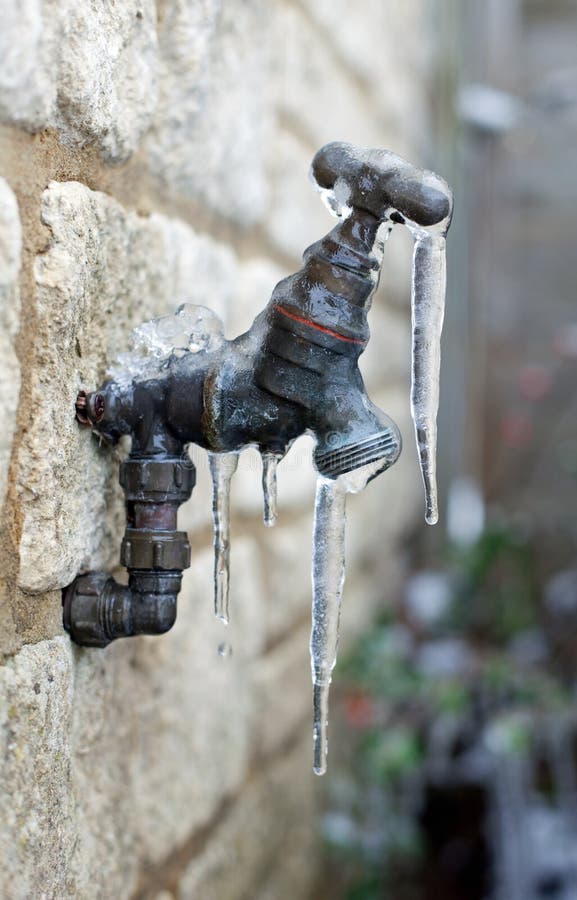Essential Strategies for Preventing Frozen Plumbing in Winter
Essential Strategies for Preventing Frozen Plumbing in Winter
Blog Article
Nearly everybody seems to have their private piece of advice in relation to How To Avoid Freezing Pipes.

Cold weather can wreak havoc on your pipes, particularly by freezing pipelines. Here's exactly how to prevent it from taking place and what to do if it does.
Intro
As temperature levels decrease, the threat of frozen pipes boosts, potentially resulting in costly fixings and water damage. Understanding exactly how to prevent frozen pipes is critical for property owners in chilly environments.
Prevention Tips
Protecting vulnerable pipelines
Cover pipes in insulation sleeves or utilize warmth tape to protect them from freezing temperature levels. Focus on pipes in unheated or exterior areas of the home.
Heating strategies
Maintain indoor spaces appropriately warmed, especially locations with plumbing. Open cupboard doors to permit cozy air to flow around pipelines under sinks.
Just how to determine icy pipelines
Search for decreased water flow from faucets, unusual smells or noises from pipes, and visible frost on revealed pipes.
Long-Term Solutions
Structural changes
Think about rerouting pipelines away from outside walls or unheated areas. Add extra insulation to attics, cellars, and crawl spaces.
Updating insulation
Buy high-quality insulation for pipelines, attic rooms, and walls. Correct insulation aids preserve consistent temperature levels and lowers the danger of frozen pipelines.
Safeguarding Outdoor Pipes
Yard hose pipes and outdoor taps
Disconnect and drain pipes garden pipes before winter months. Set up frost-proof spigots or cover exterior taps with insulated caps.
Understanding Icy Pipes
What triggers pipes to ice up?
Pipes freeze when subjected to temperature levels below 32 ° F (0 ° C) for expanded periods. As water inside the pipelines freezes, it expands, putting pressure on the pipe walls and potentially triggering them to burst.
Risks and damages
Icy pipelines can bring about supply of water interruptions, property damages, and expensive repair services. Ruptured pipelines can flood homes and trigger substantial structural damages.
Indicators of Frozen Piping
Recognizing icy pipelines early can avoid them from bursting.
What to Do If Your Pipes Freeze
Immediate actions to take
If you think icy pipelines, keep faucets open up to eliminate pressure as the ice melts. Make use of a hairdryer or towels soaked in warm water to thaw pipes gradually.
Conclusion
Protecting against icy pipelines needs positive actions and fast reactions. By comprehending the causes, indications, and safety nets, property owners can shield their plumbing during winter.
5 Ways to Prevent Frozen Pipes
Drain Outdoor Faucets and Disconnect Hoses
First, close the shut-off valve that controls the flow of water in the pipe to your outdoor faucet. Then, head outside to disconnect and drain your hose and open the outdoor faucet to allow the water to completely drain out of the line. Turn off the faucet when done. Finally, head back to the shut-off valve and drain the remaining water inside the pipe into a bucket or container. Additionally, if you have a home irrigation system, you should consider hiring an expert to clear the system of water each year.
Insulate Pipes
One of the best and most cost-effective methods for preventing frozen water pipes is to wrap your pipes with insulation. This is especially important for areas in your home that aren’t exposed to heat, such as an attic. We suggest using foam sleeves, which can typically be found at your local hardware store.
Keep Heat Running at 65
Your pipes are located inside your walls, and the temperature there is much colder than the rest of the house. To prevent your pipes from freezing, The Insurance Information Institute suggests that you keep your home heated to at least 65 degrees, even when traveling. You may want to invest in smart devices that can keep an eye on the temperature in your home while you’re away.
Leave Water Dripping
Moving water — even a small trickle — can prevent ice from forming inside your pipes. When freezing temps are imminent, start a drip of water from all faucets that serve exposed pipes. Leaving a few faucets running will also help relieve pressure inside the pipes and help prevent a rupture if the water inside freezes.
Open Cupboard Doors
Warm your kitchen and bathroom pipes by opening cupboards and vanities. You should also leave your interior doors ajar to help warm air circulate evenly throughout your home.

We were shown that report about How to prepare your home plumbing for winter weather from a friend on another web blog. Please take the time to distribute this page if you enjoyed reading it. We love your readership.
Rates Report this page